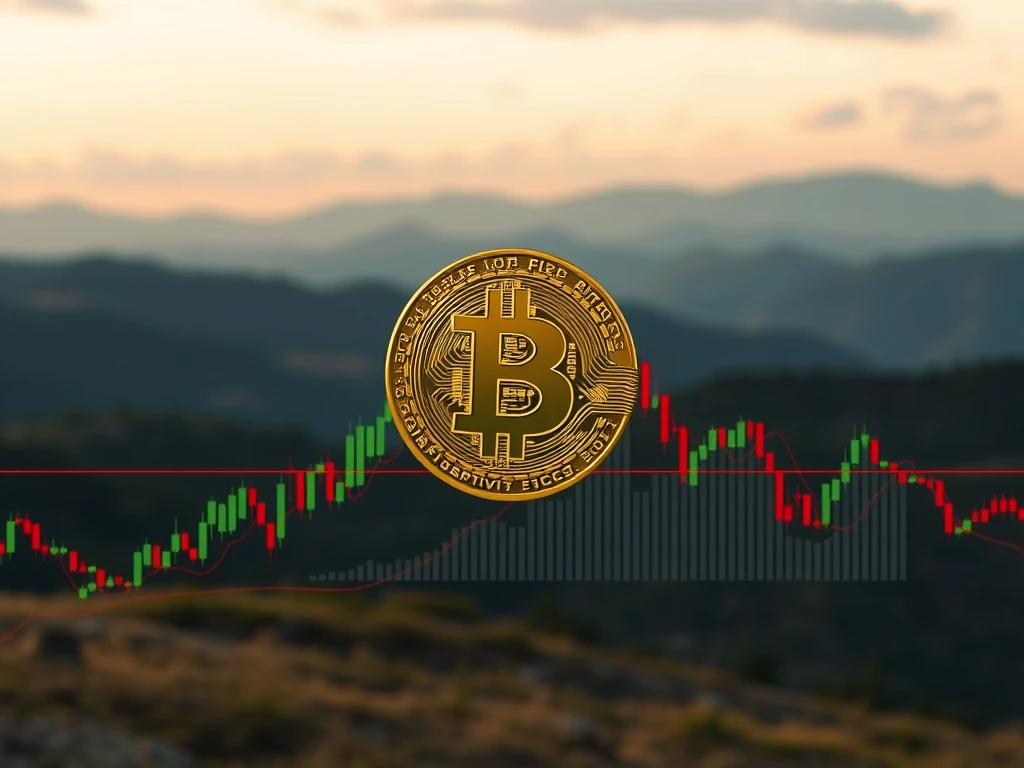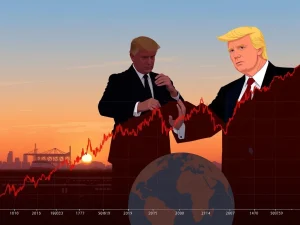Bitcoin Price Holds Steady, Awaiting Crucial Demand Boost Amid Inflation Fears

The crypto market is watching closely as the Bitcoin price maintains its current range. Despite recent volatility, BTC finds itself near key support levels. However, the path forward appears challenging, requiring a significant influx of fresh demand to overcome existing headwinds.
Understanding Current BTC Price Action
Bitcoin (BTC) recently experienced sharp price swings, leading to notable liquidations in the derivatives market. Data shows a dual-sided flush, catching both long and short positions off guard. This event cleared speculative leverage, resulting in a temporary market reset.
Currently, the BTC price is consolidating within a descending channel on the 4-hour chart. A critical support zone is identified between $103,400 and $104,600. This area aligns with a daily fair value gap (FVG) and the 200-day exponential moving average (EMA), suggesting potential for a bounce.
Why is Fresh Demand Needed for Bitcoin Price Growth?
Several factors indicate a lack of immediate bullish momentum for the Bitcoin price:
- Weak Onchain Activity: Profitability metrics are fading, and user participation remains subdued. This suggests the market is digesting recent gains and lacks the conviction for a strong upward move without new buyers entering the market.
- Decreasing Transfer Volume: Spot volume saw only a minor increase in Q2, while transfer volume dropped significantly earlier in the quarter. This highlights a lack of speculative urgency and overall market engagement.
- Technical Consolidation: The price action is confined within a descending channel, indicating a lack of clear direction until a breakout occurs.
The Impact of Inflation on Crypto Market Analysis
Rising inflation data presents a significant challenge for risk assets like Bitcoin. The latest Personal Consumption Expenditures (PCE) data, the Federal Reserve’s preferred metric, showed Core PCE climbing to 2.7%. This slight increase marks the first uptick since February 2025 and signals renewed inflationary pressure.
Sticky price growth reduces the likelihood of near-term Fed rate cuts. When interest rates remain high, borrowing costs increase, making less attractive to invest in speculative assets like cryptocurrencies compared to traditional safe havens or interest-bearing accounts. This economic backdrop is a key component of current crypto market analysis.
Bitcoin Inflation and Macro Headwinds
While Bitcoin has its own disinflationary supply schedule (often referred to positively in terms of scarcity), the broader economic concept of Bitcoin inflation in the context of purchasing power is heavily influenced by external factors like fiat currency inflation and monetary policy. The current inflationary environment and the Federal Reserve’s response create macroeconomic headwinds that the Bitcoin market must navigate.
Until macroeconomic conditions shift or significant fresh demand emerges, the market structure is likely to remain in consolidation. A bullish breakout above the descending channel requires a revival in momentum and onchain activity.
Summary: What’s Next for the Bitcoin Price?
The Bitcoin price is currently in a holding pattern, consolidating within a defined range and technical channel. While key support levels offer potential for a bounce, the lack of fresh demand, weak onchain metrics, and persistent inflation reducing the probability of Fed rate cuts create a challenging environment for a significant upward move. The market appears to be in a reset phase, waiting for a catalyst, either from renewed buyer interest or a shift in the macroeconomic landscape, to determine its next direction. Investors should continue to monitor both technical levels and economic data for insights into potential future price action.








